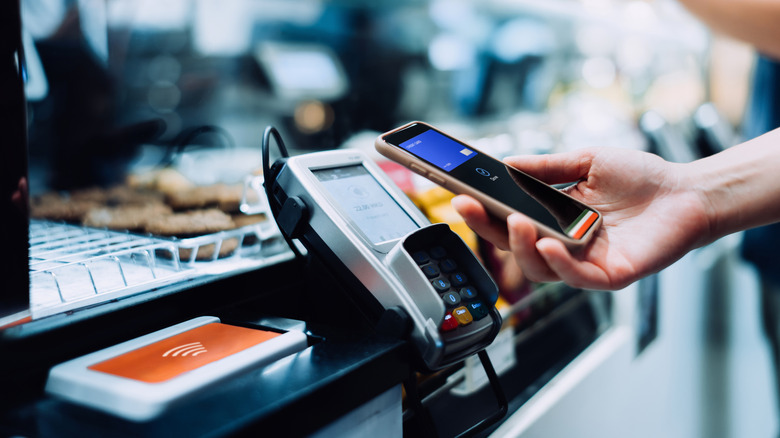
Digital payments are automated transactions that do not require cash or checks. Users can pay using their phones, computers, or other internet-enabled devices without the need for cash or bank cards. This payment method includes online banking, mobile wallets, QR code scanning, and NFC point-of-sale devices. Digital payments involve transferring money between accounts through an intermediary system that verifies and executes transactions in real time or seconds. These systems use software from banks, fintech companies, and payment processors to accurately debit and credit funds.
Payment Gateways and Processors
Digital payments rely on payment gateways and processors. Data such as card numbers and mobile wallet credentials are encrypted and securely sent to processors through a gateway between the customer and the bank. The processor verifies the payment with the issuing bank and approves or rejects the transaction. Upon acceptance, the processor notifies the merchant and completes the transaction. This process usually takes just a few seconds, making digital payments fast and reliable. By integrating these systems, e-commerce transactions, bill payments, and money transfers to friends and family are simple and secure.
Security Measures for Digital Payments
Digital payments have multiple levels of security to prevent fraud and protect user data. SSL encryption, tokenization, biometric authentication, and one-time passwords (OTPs) are used to protect and authenticate transactions. Before a user can make a digital payment, he or she must verify their identity with a password, facial or fingerprint recognition, or multi-factor authentication. Tokenization uses a temporary code or token instead of sensitive card data to prevent theft of information during transmission. Financial institutions and payment service providers monitor transactions for suspicious activity and have fraud detection systems in place to block fraudulent payments. These features make digital payments safer than cash or cards.
Different Digital Payment Methods
Digital payments include various methods to meet different user preferences and transaction needs. Apple Pay, Google Pay, and PayPal allow customers to store payment information and make transactions on their phones. Banks’ digital platforms allow users to pay bills, transfer money, and shop online. In many developing countries, QR code payments allow customers to scan a merchant’s QR code with their phone and transfer money instantly. Physical stores now accept contactless NFC payments, and customers can pay with their debit card or smartphone. These options make digital payments possible for almost all transactions, from everyday coffee purchases to large-scale online purchases.
The Rise of Digital Payments in Everyday Life
Digital payments have become part of our daily lives recently. Shopping online, calling a taxi with an app, and splitting the dinner bill with friends have become the norm. This widespread use is due to the use of smartphones, affordable internet connections, and the need for convenience. Businesses are using digital payments to streamline their operations and provide a seamless consumer experience. Digital payments are changing the way money moves in society, from QR code vendors on the road to e-commerce platforms with multiple payment methods. The behavioral shift toward faster, smarter, and more efficient financial interactions goes far beyond convenience.
Benefits for Customers and Businesses
Digital payments benefit both consumers and businesses. Consumers benefit from superior convenience, faster transactions, and better recordkeeping. Instant notifications and receipts simplify budgeting and expense tracking. Digital transactions often include membership benefits, discounts, and cashback. Digital payments can save businesses money, prevent errors, and improve security. They speed up checkout and improve sales monitoring and customer insights. Digital payments enable businesses to grow online, attract more customers, and increase efficiency. Digital transactions increase customer satisfaction and revenue through convenience.
Impact on Financial Inclusion and Economic Growth
Digital payments promote financial inclusion by giving unbanked people access to essential financial services. Mobile wallets and simplified Know Your Customer (KYC) processes enable people in remote areas to open accounts, receive wages, and make payments without having to go to a bank. These connections boost economic activity and secure savings and future investments. Digital payments enable small businesses and entrepreneurs to reach more customers, receive payments easily, and build a digital credit history for loans. Digital payments promote macroeconomic growth by improving the financial system, reducing corruption, and stimulating innovation in the financial sector.
Why Digital Payments are the Future
Digital payments represent the future of money. As society becomes more digital, the demand for fast, secure, and contactless transactions will continue to grow. Artificial intelligence, blockchain, and 5G connectivity will make digital payment systems more flexible and intelligent. Younger generations who have grown up with technology prefer digital payments. As businesses transform digitally, the importance of cash in both personal and business environments will diminish. Paperless transactions reduce the carbon footprint of financial services and are good for the environment. Digital payments could become the default form of commerce and transform the economy and the way money is used.
Conclusion
Digital payments are changing the way money is managed and transferred. Digital payments offer many advantages over cash payment systems, including fast processing speed, high security, convenience, and financial inclusion. The increasing use of digital payments by different groups of people and businesses suggests that they represent the future of finance. Digital payments will become increasingly important as technology becomes more integrated into our lives and changes the way individuals, businesses, and governments transact. This adaptation is essential to staying connected in the fast-paced digital age.
FAQs
1. What are digital payments?
Digital payments are made using a smartphone, computer, or tablet without the need for cash or checks.
2. Are digital payments secure?
Digital payments are more secure than cash transactions thanks to encryption, biometric authentication, and fraud detection.
3. Digital payments without a bank account?
In many cases, yes. Mobile wallets and prepaid cards enable digital payments without a bank account.
4. Which devices support digital payments?
Digital payments can be made via smartphones, tablets, smartwatches, laptops, and smart speakers.
5. Will digital payments replace cash?
Cash may not be disappearing anytime soon, but digital payments are becoming the norm due to their efficiency and convenience.
